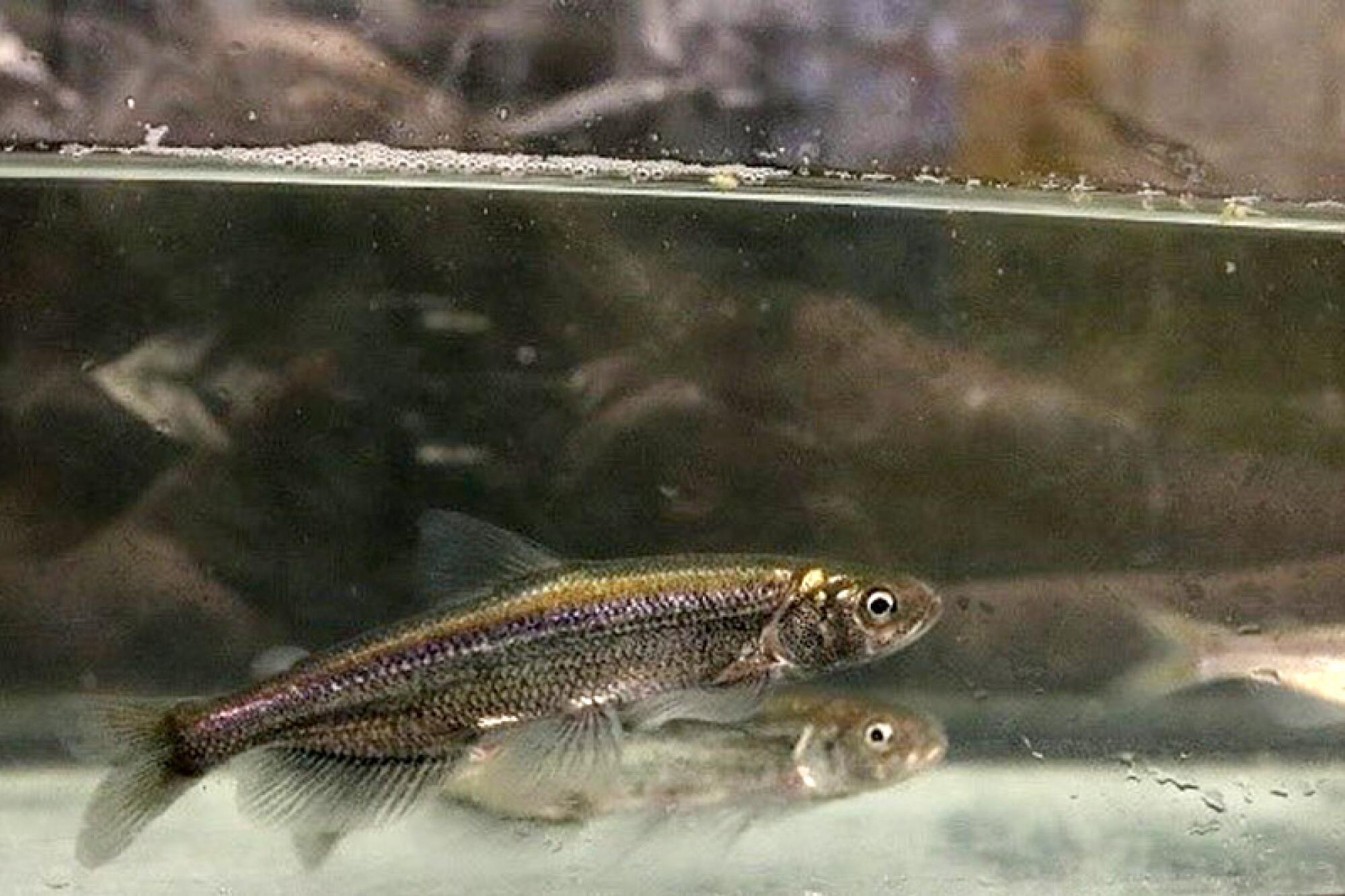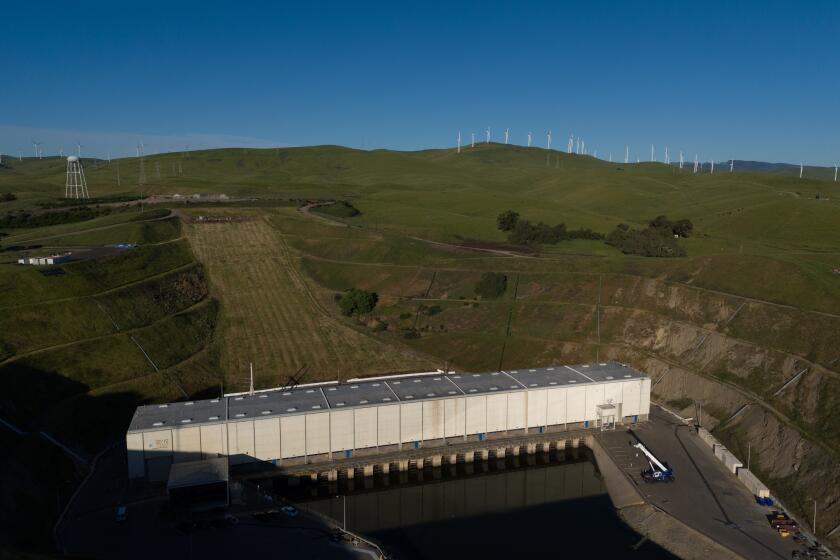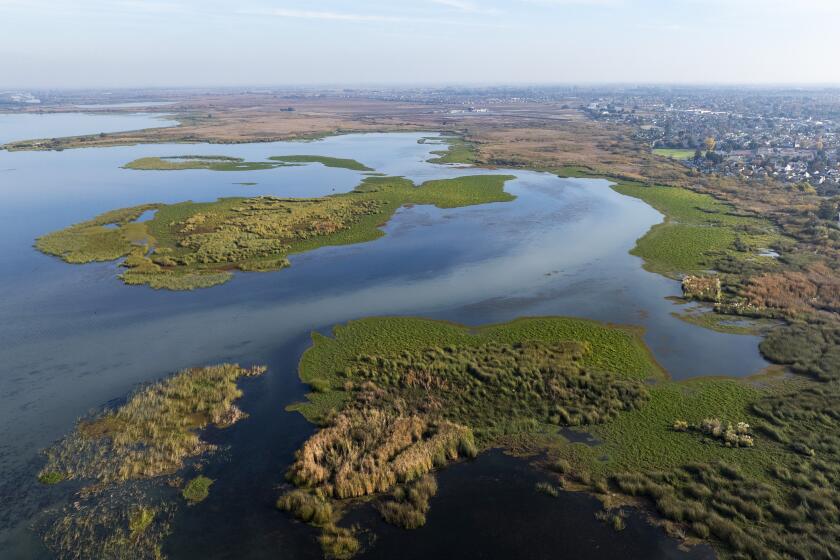
The longfin smelt, a finger-sized fish that once filled San Francisco Bay, has suffered such a drastic decline that the federal government has determined the fish are at risk of extinction.
The U.S. Fish and Wildlife Service announced Monday that the population of longfin smelt in the bay and the Sacramento-San Joaquin River Delta is now listed as endangered under the federal Endangered Species Act.
Longfin smelt are the sixth fish species in the bay estuary to be added to the federal endangered species list. The fish were listed by the state as threatened in 2009.
Leaders of environmental groups said they hope federal protections can help save the fish by placing additional restrictions on the pumping of water from the delta.
“More river flow needs to make it out of the delta for this fish to recover,” said Jon Rosenfield, science director for the group San Francisco Baykeeper. “Its catastrophic decline is yet another sign that we take too much water from the rivers that feed the bay.”
The decision concludes a lengthy process that began with a 2007 petition submitted by California environmental groups and that involved several lawsuits.

Longfin smelt were once among the most abundant fish in the estuary, serving as an important food source for larger fish and birds, and for a time supporting a commercial fishery in the 1800s.
Since the 1980s, Rosenfield said, research indicates the population has declined about 99%.
The U.S. Fish and Wildlife Service said in its announcement that the main cause of the population’s decline has been habitat loss, “primarily due to long-term reductions and alterations in freshwater flow into the San Francisco Bay estuary.”
Paul Souza, the agency’s regional director, said the hotter and drier climate has contributed to the decline of longfin smelt.
“The species needs our help,” Souza said. “We are dedicated to working with others to conserve longfin smelt.”
State and federal pumping facilities in the delta, which send water flowing in the aqueducts of the State Water Project and the Central Valley Project, are at times required to limit pumping to minimize losses of protected fish species.
The addition of federal protections for longfin smelt will “provide consistency between state and federal endangered species regulations,” the Fish and Wildlife Service said.
As California pumps water south, an elaborate operation focuses on rescuing fish. Lately, more fish have been arriving, forcing the state to pump less water.
Rosenfield said Baykeeper and other groups will be watching to ensure the federal government enforces science-based protections.
Longfin smelt live in bays and estuaries along the Pacific coast.
They are typically between 3.5 and 5 inches long, larger than delta smelt, which also are on the endangered species list, and are more tolerant of ocean water.
While they mostly live in the estuary, longfin smelt can migrate to the ocean. They typically move into the delta during the winter and spring to spawn in freshwater areas.
The Delta Conveyance Project is a key component of Gov. Gavin Newsom’s strategy for a hotter, drier California. Opponents say it will be an ecological disaster.
Other fish species have also suffered declines in the delta in recent years.
Surveys have found dwindling numbers of delta smelt in the wild. Winter-run Chinook salmon are endangered. And the fishing season for fall-run Chinook has been canceled the last two years because of low population numbers.
State officials are conducting a review to determine whether to protect white sturgeon, the largest freshwater fish in North America, as a threatened species.
“The estuary is sending us multiple signals that we are taking too much water out,” Rosenfield said.
“We need to divert less water, use water more sustainably, and allow some more of the water that flows out of the Sierra to make it into and through the delta,” he said. “And that would be possible by reducing our demand for water — reducing agricultural demand, and reducing municipal demand.”
Rosenfield said the federal protections are long overdue. He first helped write a petition calling for the federal government to protect longfin smelt in 1992, when he was starting his career as a fish biologist, but that petition was rejected.








